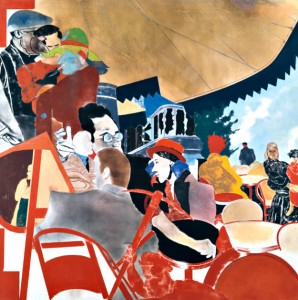The race for the next U.S. presidency is on, but this time, not so many Americans are heading for the exits. Four years ago, when presidential contender, 76-year-old Arizona Senator John McCain, named the intellectually feather-weight Alaska governor Sarah Palin as his vice presidential running mate, many serious people considered emigration to Canada or Australia. The thought of having Sarah Palin, who in an interview could not name a single newspaper she read and who claimed she could see Russia from her upstairs window, being only a heart-beat away from the presidency scared the bejeebars out of many U.S.-citizens. → continue reading
The U.S. Jewish Vote, 2012
In a Vienna Coffeehouse, 1935
“It didn’t begin until 1935, when I was sitting over a newspaper in a Vienna coffeehouse and was studying the Nuremberg Laws, which had just been enacted across the border in Germany. I needed only to skim them and already I could perceive that they applied to me. Society, concretized in the National Socialist German state, which the world recognized absolutely as the legitimate representative of the German people, had just made me formally and beyond any question a Jew, or rather it had given a new dimension to what I had already known earlier, but which at the time was of no great consequence to me, namely, that I was a Jew. → continue reading
Riddled with References
Kitaj’s canvasses are riddled with references to artists and scholars, from Erasmus to Herman Melville, from Fra Angelico to Rosa Luxemburg. From a formal perspective, Kitaj’s obsessive use of citations reflects on the visual impact of images and names, signs and references. Conceptually, citations can involve finding artistic forefathers, and building an intellectual community. This is what I find particularly moving about Kitaj’s work: the artist peoples his paintings, like dream worlds, with “adopted ancestors,” who interact with one-another. → continue reading
